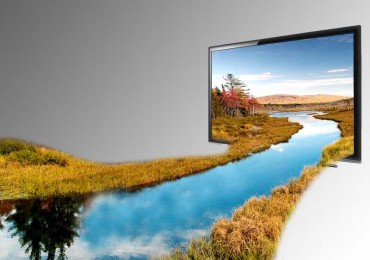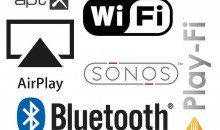Getting Streaming Content to My TV
The TV is, more and more, becoming the hub of your entertainment system. Many TVs come with some sort of streaming media service integrated right into the interface. Where televisions used to be dumb devices that simply played back programs from antennas or cable boxes, now they can connect to the Internet, stream movies, and even let you chat with family and friends online.
But what about those of us without these newer “smart” televisions with integrated software and network features…are we left out in the cold? No. There are tons of ways for you to get streaming media content to your television. Some methods are less expensive and better than others. Let’s start with the most obvious:
Dedicated Streaming Media Devices
What I’m talking about here are products like the Apple TV, Roku, and Google Chromecast. There are more products, but these are currently the three most popular. Connect a device like this to your television, and you can stream Netflix, purchase and watch movies from VUDU, Amazon VOD or iTunes, or even browse the web. These streaming media devices are inexpensive, too. The AppleTV costs just $100, the Roku starts at just $49 and you can get the Google Chromecast for just $35. These devices are so inexpensive, it’s easy to make any TV “smart” and there’s no reason to upgrade if your TV is working fine otherwise. Here’s how some of these popular devices fare against each other:
Network App-enabled Blu-ray Players
Not only can you utilize dedicated streaming media devices like the Roku and Apple TV to get rich media content to your TV, many Blu-ray players offer these features as well. This is especially significant since many of these players are quite affordable and, unlike the $99 media streaming devices, play Blu-ray discs and DVDs. Yamaha, Denon, Onkyo, Oppo and Marantz have network features—to name a few. The apps vary from manufacturer to manufacturer, but you can expect to find such services as Netflix, VUDU, YouTube, Blockbuster on Demand, Hulu Plus and more. They will also typically stream media from DLNA-compatible devices and connected USB drives. This is probably the most popular way to get streaming media to your television, particularly for those looking to make the jump from DVD to Blu-ray. For only a few dollars more, you can upgrade and get a lot more functionality.
AV Receivers with Smart Network Apps
While not the most practical way to get network apps to your television, there are a number of AV receivers from various manufacturers which offer streaming media services. In our opinion, streaming music services make a lot of sense on an AV receiver—after all, it’s primarily an audio device, so adding Internet radio and services like Spotify and Pandora make a lot of sense. It’s when they start to add software like Netflix and VUDU that it extends the receiver to a place where I think other devices should probably be in control. One feature I really like to see on AV receivers is AirPlay. With AirPlay you can stream music via WiFi directly to the AV receiver—and without any hassles. With AirPlay, you can also stream from most popular apps, like Spotify, Pandora and Rhapsody—whether or not your AV receiver has those apps as part of its repertoire.
“Smart” Televisions
Possibly the most expensive way to get network apps to your television is by…buying a new TV. But it would be negligent not to point out that most newer televisions are including at least some network applications. The most sophisticated systems include an entire interface dedicated to providing tons of apps for consumer services like Netflix, VUDU, HBO Go, etc as well as more obscure sources like TED TV, Crackle, Fox, and others. You can get a remarkable amount of content—both free and paid—from these smart TVs. And since they’re one of the central hubs of your entertainment experience, having a ton of sources on these devices is a pretty sound idea. About the only thing we don’t like about having all of the content here is the fact that we know so many people who invested in HDTV before all of these items became available.
If that’s you, then go with one of the other sources. The bottom line is that streaming content allows you to watch movies and listen to music in ways never before possible—and without having to connect your laptop to your television. In the past home theater PCs were all the rage—although only with those who were daring enough to get them connected and working. Now, apps are redefining how we consume content in our living rooms and on our mobile devices.
Streaming media devices in the living room tend to help meld the two worlds together. And I like that.
Do you own a device that streams networked content? Which one? Let us know on Facebook or comment below and join in the discussion.








WDTV Live Streaming media player… although I prefer to store and stream my content locally. Until everything is streamed in full quality (i.e. music in FLAC, movies in full 1080p/DTSMA) I have no interest in streaming from the web.Read more…
[Clint DeBoer] Ah, so your main reason for local storage is to enable true HD playback of your content? That seems to be one of the continuing issues with streaming—quality.Read more…
Yes, it’s all about the quality. And here’s the thing — even if I COULDN’T discern between streaming Netflix vs local Blu-Ray quality, just KNOWING that Netflix is downscaling / downrezzing their stuff would take away from my enjoyment.Read more…